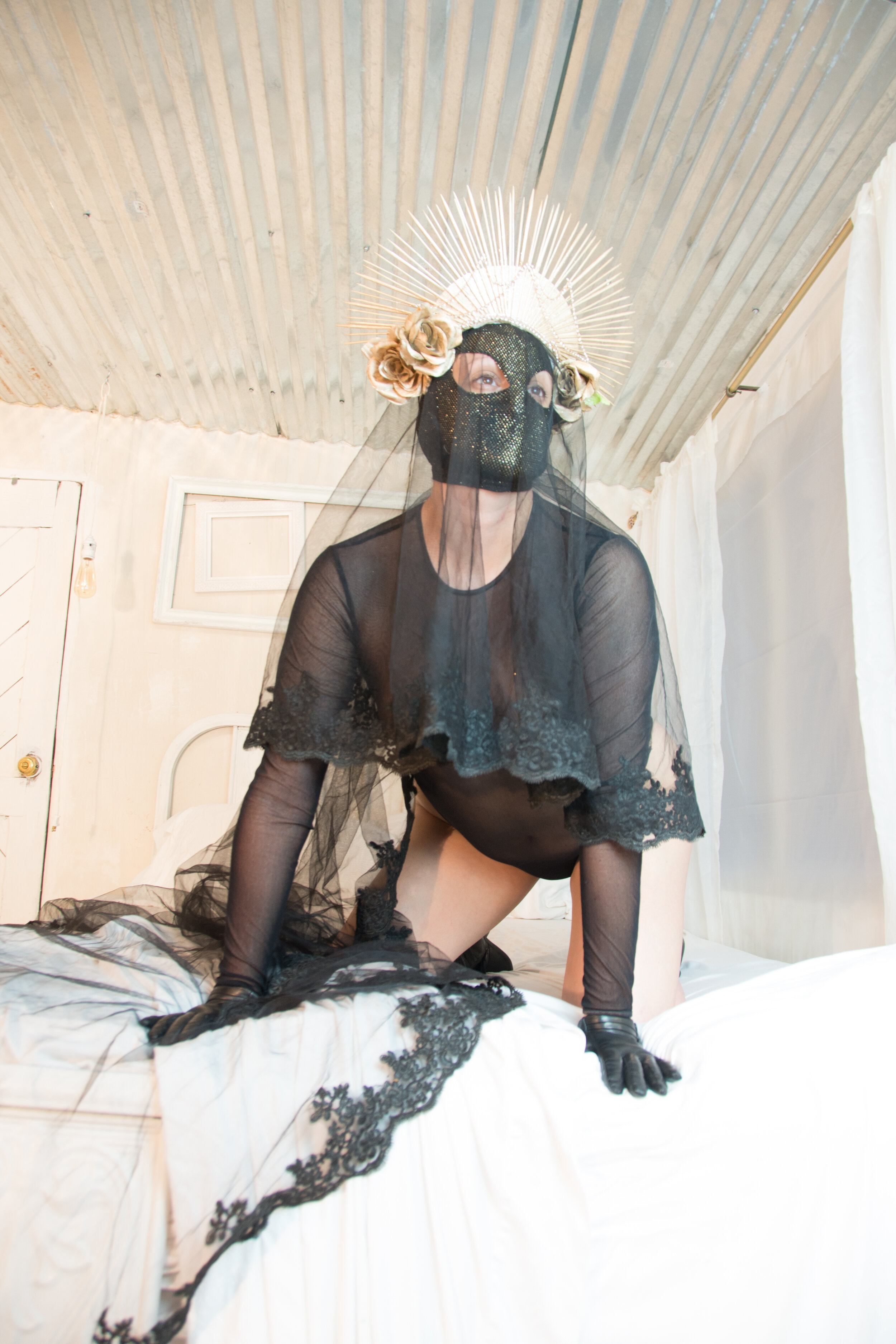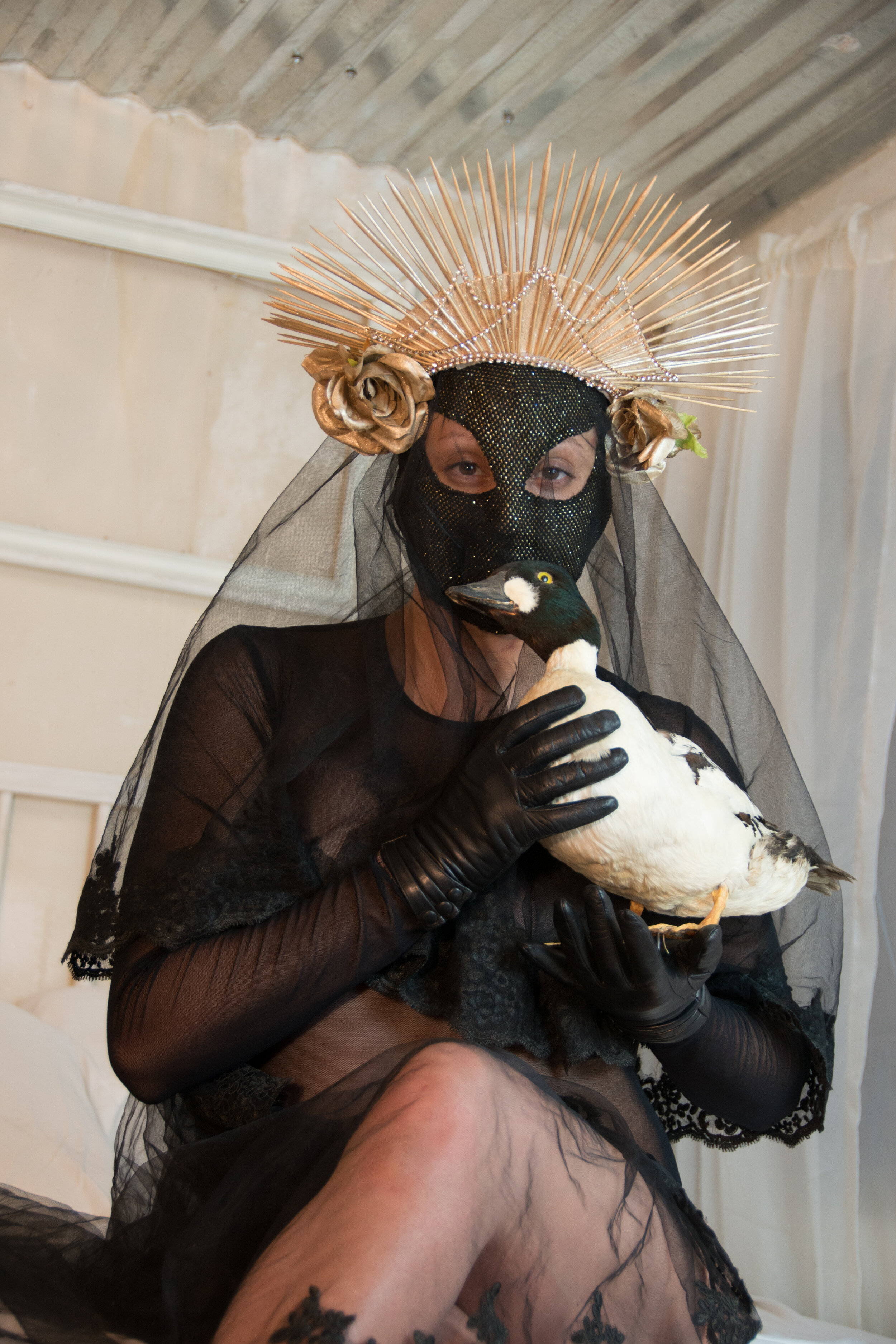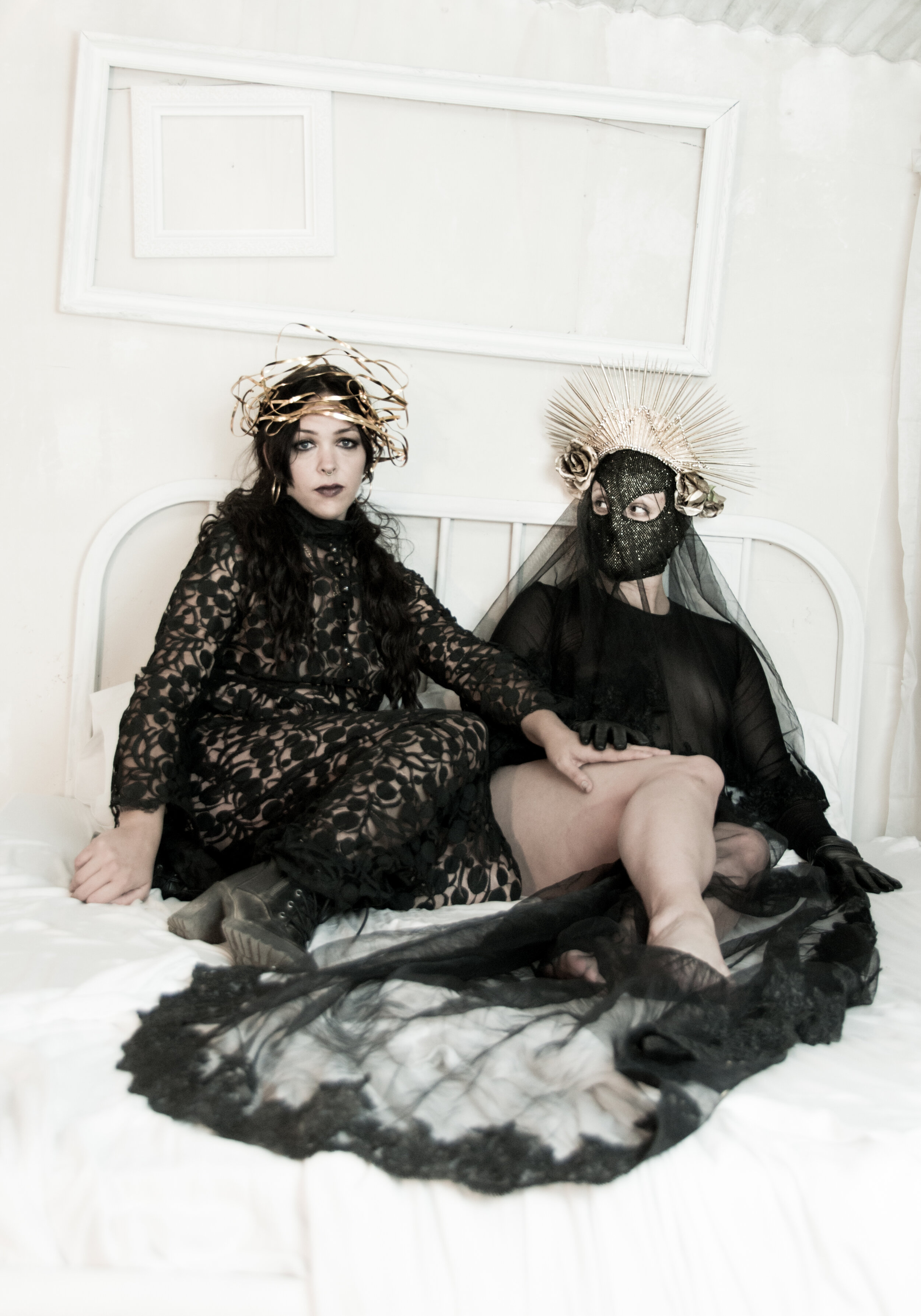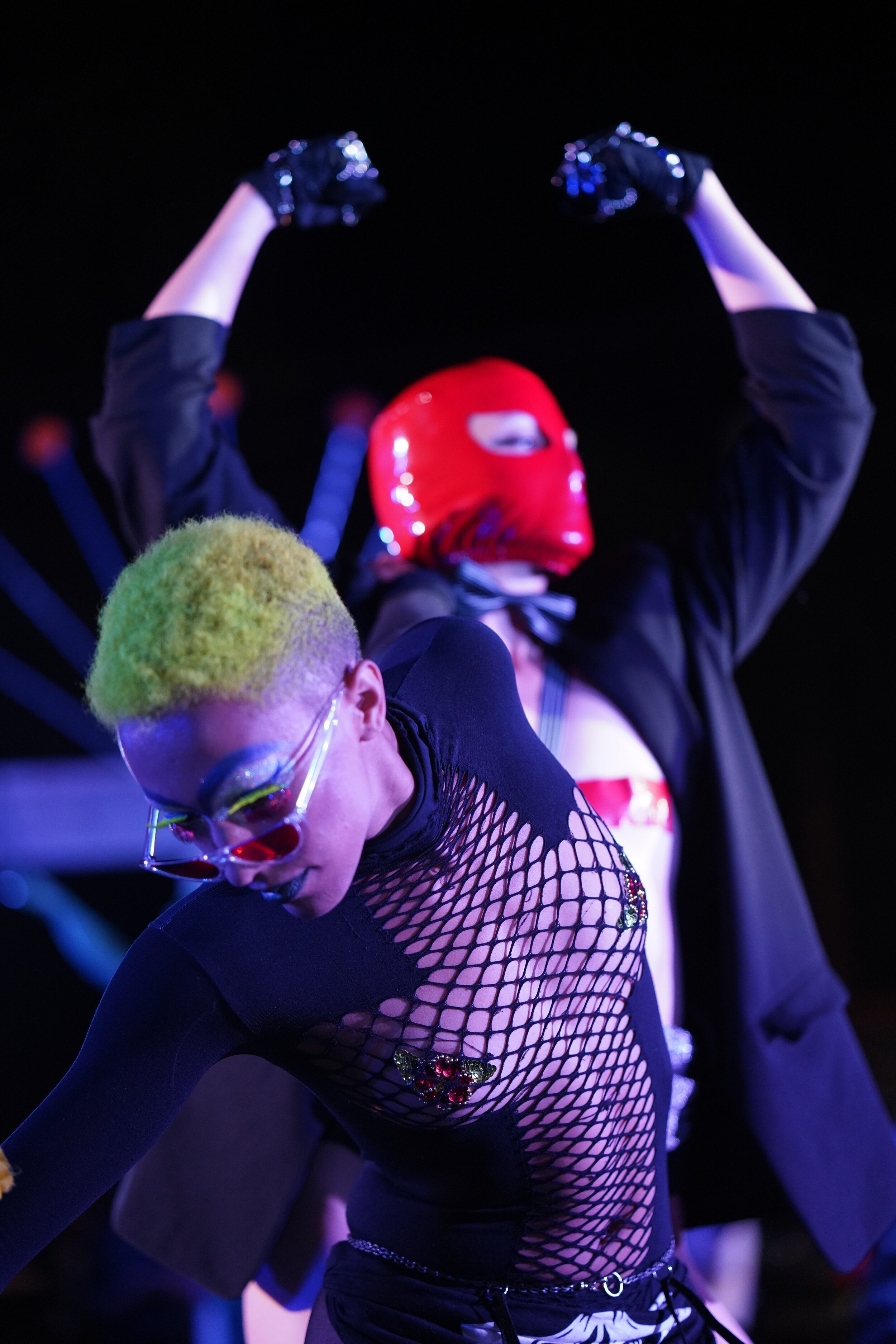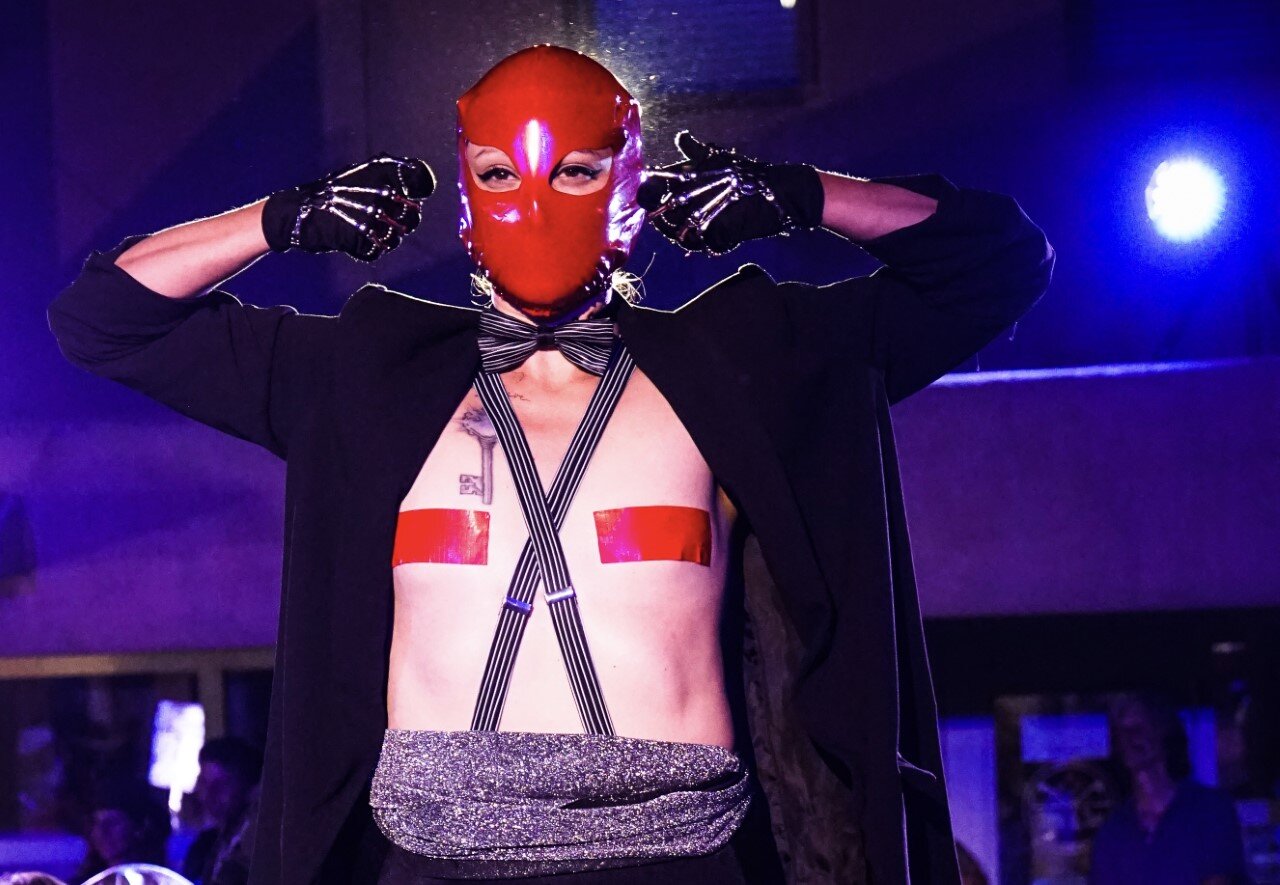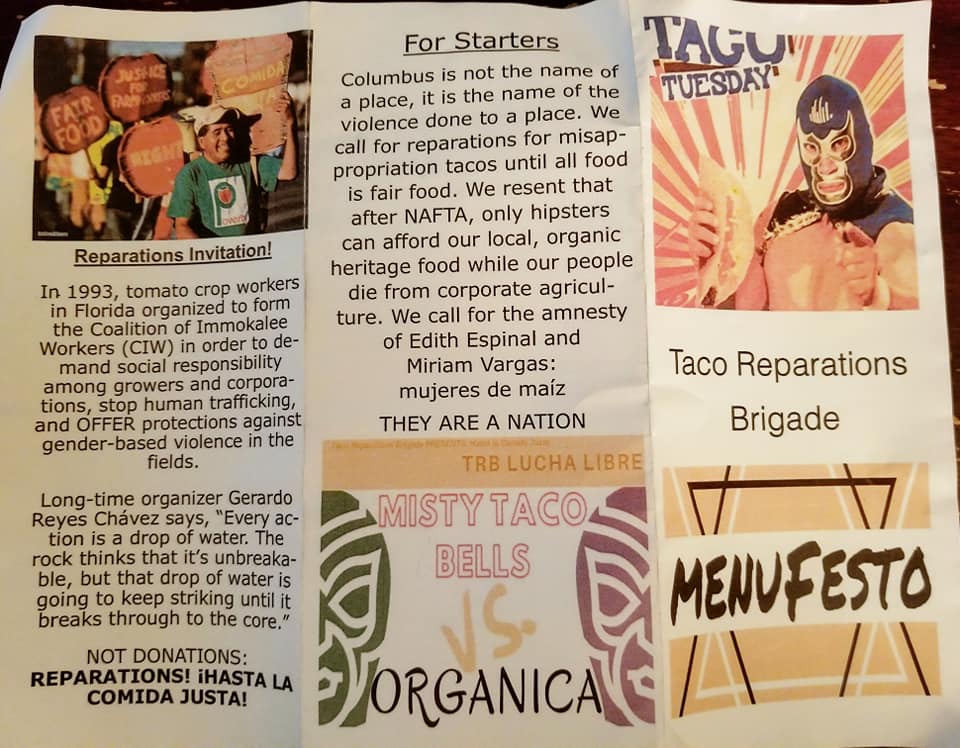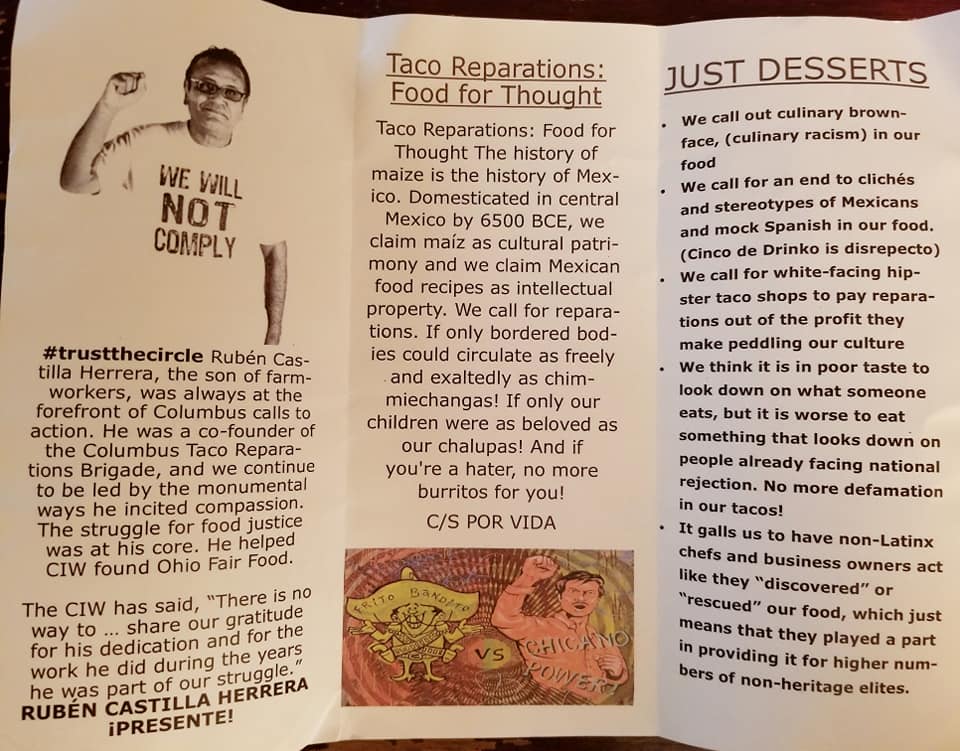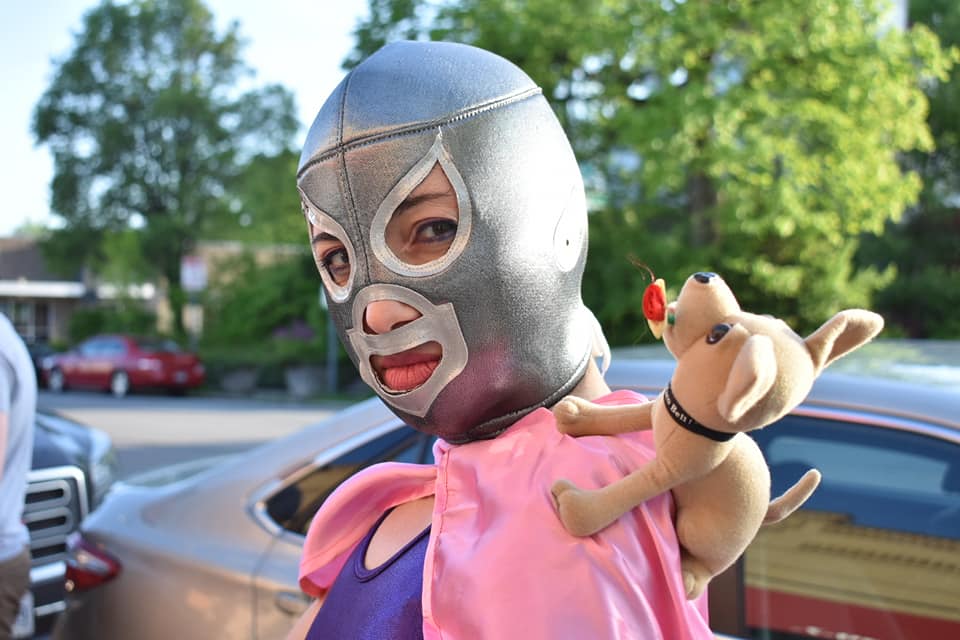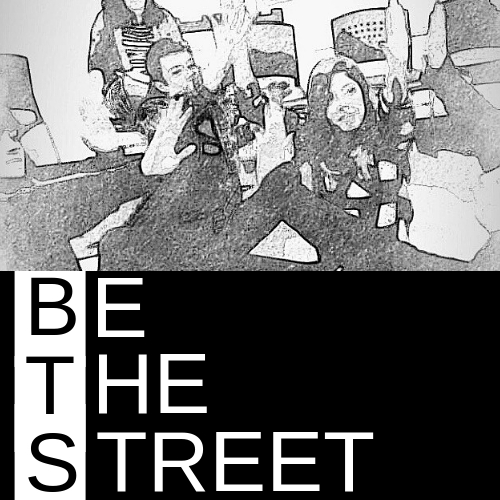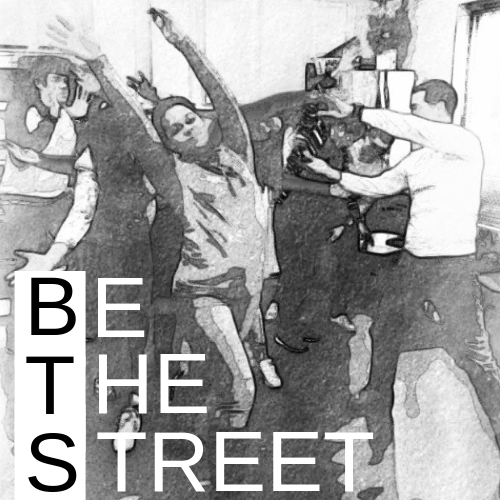LATINE MOVEMENT:
EMBODIED INTERSECTIONS OF LATIN DANCE, MUSIC,
and COMMUNAL PRACTICES
Stephanie Mitchell/Harvard Staff Photographer
What is contemporary dance? This question has been with me since the term “contemporary” came into my world as a dancer. Strangely, I locate it first on the competitive dance scene as a choreographer rather than in academia. Like most of the students who come into the walls of the universities we research in, I remember everyone trying to understand what it meant as choreographers to "be contemporary" or place work in the contemporary category. My memory recalls a slew of every kind of mash-up between styles being accepted into these contemporary dance categories. Being a non-traditional student in dance means I had a professional career before entering higher education. I started my higher educational journey at 30 because I was asking many questions as an educator, wanting to return to my solo research, and the glass ceiling was getting more oppressive. Arts livability is needed, and even more so, because of the unique skillsets we can offer as mobilizers, creatives, and problem solvers—at least, I believe. Maybe, higher education could reconcile my unanswered questions. While I attribute much to the brilliant professors, collaborators, and colleagues throughout my institutional journey, I became aware of several inequities in what we hold as history, archives, and beliefs. Where are all the Latin choreographers and dancers? Many Latinx scholars think and write about the same in various case studies. Thanks to the outstanding Professors at Ohio State University, I re-grounded myself in the African and Indigenous diasporas. I expanded the modernism and post-modernism of dance history and connected it with my historical understanding across the globe, which broadened my perspective. I still had many questions: Where are other diasporas in movement research? Why are we not starting with the questions and looking at the bigger picture? Why are we not embodying dance history in the classroom? So, as one does, you lock yourself in a studio and begin to make constellatory maps of movement conversations, records, and patterns between Latin and African Forms in dance, music, and social scaffoldings. Thank you, Crystal Michelle Perkins, Norah Zuniga Shaw, Suzan Bradford Kounta, and Susan Hadley. Taking West African Dance to connect more dots simultaneously was essential to avoid over-reading or stretching. My thoughts here are not the tones of deep academic documentation but more of a soft survey of how the connections operate and converse.
I love Miguel Gutierrez and Jose Limon for their contributions; thank you; where are the Mujeres? Carmelita, Rita, Tina, La Argentina, Maria Tallchief, and Chita–I see you outside ballet, broadway, and Hollywood. Donde? Si, I know we are here and have been here. Yes, my constellatory lineages trace so many more. Why do the pipelines keep supporting only specific cannons of history? Why do funds keep funding the same artists? The same patterns are repeatedly churning with more wasted fossil fuels, no livable incomes, and unhealthy labour management.
Latinx Movement Practice started not as a trickle-down structure, not as a place of exclusion, not for aesthetic creation, but as a place to pull the conversations together through embodiment while seeing, valuing, and appreciating who was in the room. I say this because this course was designed specifically for embodied curriculum within the ecology of higher education. Soon it emerged as Latinx Movement: Embodied Intersections of Latin Dance, Music & Communal Practices, which is more of the call back to the original proposal of Latinx Movement Practice at the intersection of Latinx studies’s art, literature, and music connections I was seeing. Soon, there will be another shift from Latinx to Latine to align more with linguistic access and inclusion across identities and indigenous languages without the x. Something we provoked in the course as part of the socio-political component and umbrella academic terminologies for identity. This course examines history, migration, socio-political articles, journals, and videos. The histories we discussed include African, indigenous, Latin, and European diasporas, moving forward toward Indian and Asian connections. We have reflective and critical responses with multi-modal engagements as time passes. We research more spaciously through the forms, music, and people who contribute. We break down the divides. Everything and everyone is connected in these rooms regardless of how complicated the histories are, and that is the most valuable takeaway. As a Latinx facilitator, I note even the deep tangles of indigenous, European (Spanish included), Asian, Indian, and African (more) ancestries are a part of the conversations. Afro-Latinx honoring and visibility are crucial in these spaces, as respect for language erasure/differences and inclusion of accepting a spectrum of perspectives. Nosotros Somos. If one has never stepped inside, one does not understand what mobilizes in this course. I know this all sounds impossible, but history tells differently; the Workers' Dance League is known and documented to incorporate a fabric of constellatory ideas (yes, communism) but remember, this group included Anna Sokolow, Jane Dudley, Sophie Maslow, and José Limón, then came New Dance Group which gave rise to many critical creative and scholarly embodied movement practitioners, and I am sure many more who have not been having recognized throughout history have made similar impacts. Stacey Prickett (1989) wrote about this in her article “From Workers' Dance to New Dance.”
What happens when pedagogical philosophies, activism, and equitable educational initiatives are activated and mobilized in the room? Again, this is a familiar methodology because communities have been doing this outside the institution for centuries, but that's the point. How can dance be separated into formal, vernacular, and social? How can a higher institution determine the foundational credits without discrimination of what dance histories' expanded lineages? Maybe we are looking at the scaffolding all wrong. Past 2020, we know this already: the system needed to stop, shift, and re-evaluate what dance was doing curricularly. Who do we serve? How do we think about dance as an education and profession? These are all essential and constant questions to sit with. The lineages of dance have been at the core of society for as long as humans have existed. Except for a brief period, a film called Footloose documented a whole town that didn't dance. The last sentence is a joke. Dance was the heartbeat of our social function pre-industrialization, modernization, and capitalization. Suppose one cannot re-engineer or re-imagine what dance and movement possibilities are for educational purposes in alignment with our present moment (2023). In that case, I am at a standstill. The standstill is good; I will breathe, rest, play, and scaffold during the low tide.
How I am constellating and citing the above idea:
To name a few of how I sew: Paulo Freire, Laura Rendon, adrienne mares brown, Dr. Nyama McCarthy-Brown, Grace Lee Boggs, bell hooks, Audry Lorde, Octavia Butler, Norah Zuniga-Shaw, The Body Collective, Dr. Hannah Kosstrin, La Pocha Nostra, Sidra Bell, Augusto Boal, Dr. Nadine George-Graves, Anne Bogart, Tonya Lockyer, Pat Graney, The Kybalion, Dana Caspersen, Thich Nhat Hanh's.
We started with this question:
What is Contemporary Dance? This is a question many institutions are asking and are publishing about. Contemporary dance is the culminating form of erasing peoples, lineages, and histories in dance. Contemporary dance makes available all movement forms and styles under the umbrella terminology of high-brow cultural production in the name of systemic practices of racism for the continued marketing of Western aesthetics. One could say neglect is happening because of what has come before to "create" new forms for specific passive-aggressive systems continuing to devalue and overlook the labor, bodies, and intellectual contributions. The educational foundations and ideas of learning dance need to be re-imagined. More significantly, curricular irregularities under contemporary dance contribute to the disappearance and oppression of who, what, when, where, and why we dance if left exclusive and invisible. I believe these are the crux of research standards in the field.
Keep an open mind, and don’t follow the cults of capitalism in dance.
How do we move in the name of better practices that aren’t centered on Western systems of oppression? We look back, stay present, and honor our histories because they create the future stories for others to build upon. How do we build the city? We move forward responsibly and add some science fiction to the mix.
Abrazos,
LROD
Livable Futures: Climate Gathering
NEWS: JANUARY 2020: Livable Futures: Climate Gathering & Performance Ritual, Barnard College, NYC - Residency & Performance.
“Every month in 2019, we are hosting a Climate Gathering for small groups interested in turning toward climate change and moving through it in a transmedia performance ritual of sound, light, water, and intermedia immersion. We find that holding space for feeling into thought makes intentional action more possible. We are in Germany now but will do more gatherings in Columbus starting in August. Join us: livablefuturesnow.org” - Norah Zuniga Shaw.
I am a contributing artist, and my involvement with Livable Futures started three years ago. My role began as an experimental dancer in the work and evolved to lighting design and co-creative collaborator. Lecture on Climate is a co-creative environment allowing those involved to dive deeply into climate change's artistic, theoretical, and factual implications. During our rehearsals and residencies, we have held space for special guests like Tonya Lockyer, Michelle Ellsworth, Pamala Z, Andre Zachary, and Susan Kozel to participate in the collaboration process. Through these rich explorations, we have discovered the width and depth of different variables essential to the work. Alongside these special guests are the core members, Norah Zuniga Shaw, Oded Huberman, Marc and Ann Ainger, Dorian Ham, Lexi Stilianos, Laura Patterson, Tara Burns, and myself. The audience collaborates with this work because they are personally invited to complete a survey before attending. The reason for this is Norah can source the audience for texts to connect on a deeper level of performance, like sewing in the audience's thoughts about climate to prime the environment of the performance for action versus passivity. Having an inside scope of how the audience participates is further research for me when building co-creative immersive environments.
As a dance practitioner, Lecture on Climate challenges me to investigate deep dives into spaces where time no longer exists, warps forward, and slows down. The work starts with a simple score - improvise with a partner but stay entirely in sync with each other. While this task seems easy, it is very complex to be identical to someone in improvisation. My partner has shifted over the two years, but there is an expenditure on the possibilities of movement operations each time. My work with movement has seeped into states of deep meditation, internal/external critique, and hyper-awareness of space and time throughout this project.
Sharing a Lecture on Climate and the rich dialogue of transmedia performance with more communities is deeply needed in our present moment.
Photos by: Studio Kin
LA POCHA NOSTRA
During 2018-2020, As a former core member, I worked with the international company La Pocha Nostra with Guillermo Gómez-Peña, Balitrónica, Emma Tramposch, and Saul. Not only has this radical team of performance artists changed my life, but they have also helped me find a home in the performance art world where my work as a performance artist, mask and apparel maker, collaborator, and choreographer can all converge within the cultural, liberatory, and political Pocha universe. The opportunity to perform research within a lineage of Mexican/Chicano aesthetics was beneficial. I believe futurity beyond the cultural borders of stereotypes and traditional production is possible. The masks and apparel shown here are all designed and assembled by me to create personas for our activism and street performance interventions.
Photos: Heather Lynn Sparrow, Zoe Zimmerman
Taco Reparations Brigade
Taco Reparations Brigade (TRB) founding members are Paloma Martinez-Cruz, Ruben Castille-Herrera (RIP 2019), Laura Rodriguez, and Bryan Ortiz. Photos: Michael Babcock
TRB sets out to confront the food appropriations in the streets of Columbus, OH, with performance as a protest. As a co-founder with Paloma Martinez Cruz, Ruben Castilla Herrera (RIP), Bryn Ortiz, and Nicholas Pasquarello. Usually spotted around local Mexican or Latin food restaurants that have stolen Latin food to capitalize. This group is a radical pop-up performance group spreading awareness of culinary brownface. TRB performs as a Lucha Libre in the streets of Columbus with heart-stopping action. The entertaining slow-mo wrestling match between Misty Taco Bells (PMC) and Organica (LROD) draws crowd interactions and conversation about TRB’s cause. The Menufesto is solicited to people eating in the restaurant and offers information and chants. Donations taken go to various Latino organizations around town.
For more information, read Paloma Martinez-Cruz’s new book. Click here.
If you want to get involved, find us on Facebook. Click here.
Be The Street
During Spring 2019, I engaged in devising community theater with Our Lady of Guadalupe Center (OLGC). Our facilitators were Moriah Flagler, Ana Puga, and Paloma Martinez-Cruz. While I continued my dive into theory around community engagement, I was also able to continue to query the complex realities of excavating community narratives. The community at Our Lady of Guadalupe Center was beyond welcoming and willing from day one to participate, which, at heart, is where the beauty of this project lies.
Brief
Mission: OSU’s Be the Street (BTS) is a community-engaged performance project dedicated to creating collaborative spaces with and for the community within the Hilltop neighborhood through storytelling.
During this semester, I was developing the branding and logo for promo materials for the performance event. I also facilitated weekly devising meetings with the Our Lady of Guadalupe Center with Sebastian Munoz and Bryan Ortiz. I intended to apply my understanding of inclusive, adaptive, and expansive pedagogy in community movement practices. My mentor, Dr. Nyama McCarthy-Brown, is re-negotiating how I understand post-colonial attitudes about DEIAJ practices in the dance.
Developing a brand is a transferable skill I have picked up from being in the visual arts field and being on my marketing team as an arts entrepreneur. Using InDesign and Photoshop, I was given a springboard of an idea to run with from the lead directors of Be the Street. I find designing for a company or program easier when I have somehow been embedded in the work. The logos and brands had to go through several approval requests while meeting OSU branding standards. I enjoyed the process and am glad I was able to be a part of it.
On the devising performance with the community end. Our time over the 15 weeks was to create a 20-minute performance piece based on roots, home, and identity. This piece would be performed at the end of the semester at Steamworks Factory. We worked with Albany Park Theater to develop different strategies on how facilitators can give space for our community participants to control how the performance shapes itself. At the end of our time together, we created a piece made from music, songs, and installation called “Vengo de…”. We watched our participants engage with different art forms and reconnect with their creative voices during this time.
I am drawn to be a part of these co-creative spaces of art-making. Having OSU Be the Street provided a bridge into a community often forgotten in Columbus, OH. This project also created visibility for the Latinx community here while further drawing together those who were already a part of the Hilltop. We welcomed our group of Graduate students who came from theater, dance, and Languages to celebrate community and thrive through an evening of art-making.
For more info about Be the Street, click here.








